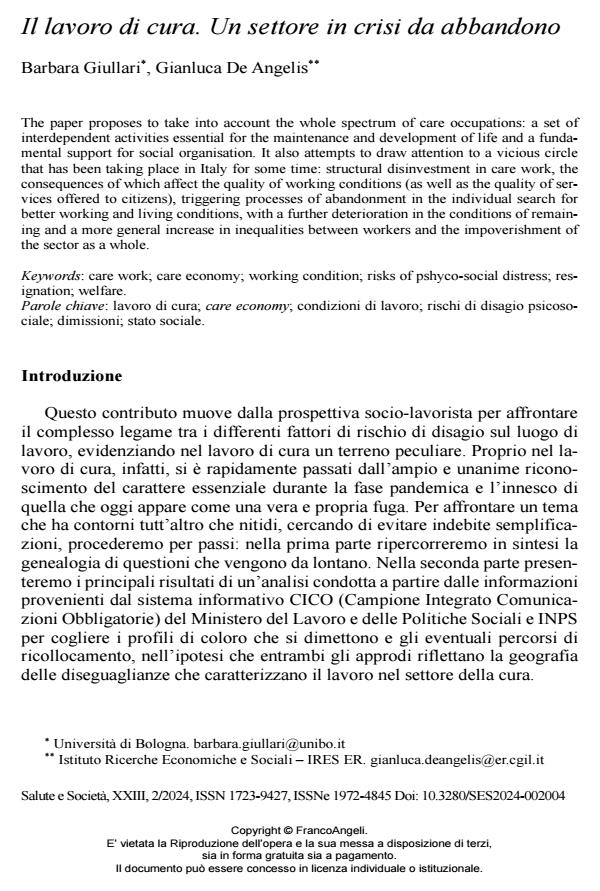Il lavoro di cura. Un settore in crisi da abbandono
Titolo Rivista SALUTE E SOCIETÀ
Autori/Curatori Barbara Giullari, Gianluca De Angelis
Anno di pubblicazione 2024 Fascicolo 2024/2
Lingua Italiano Numero pagine 17 P. 53-69 Dimensione file 215 KB
DOI 10.3280/SES2024-002004
Il DOI è il codice a barre della proprietà intellettuale: per saperne di più
clicca qui
Qui sotto puoi vedere in anteprima la prima pagina di questo articolo.
Se questo articolo ti interessa, lo puoi acquistare (e scaricare in formato pdf) seguendo le facili indicazioni per acquistare il download credit. Acquista Download Credits per scaricare questo Articolo in formato PDF

FrancoAngeli è membro della Publishers International Linking Association, Inc (PILA)associazione indipendente e non profit per facilitare (attraverso i servizi tecnologici implementati da CrossRef.org) l’accesso degli studiosi ai contenuti digitali nelle pubblicazioni professionali e scientifiche
The paper proposes to take into account the whole spectrum of care occupations: a set of inter-dependent activities essential for the maintenance and development of life and a fundamental support for social organisation. It also attempts to draw attention to a vicious circle that has been taking place in Italy for some time: structural disinvestment in care work, the conse-quences of which affect the quality of working conditions (as well as the quality of services offered to citizens), triggering processes of abandonment in the individual search for better working and living conditions, with a further deterioration in the conditions of remaining and a more general increase in inequalities between workers and the impoverishment of the sector as a whole.
Parole chiave:lavoro di cura; care economy; condizioni di lavoro; rischi di disagio psicosociale; dimissioni; stato sociale.
- I lavoratori del SSN (non) vanno in paradiso. Condizioni di lavoro e rappresentanza dopo l'emergenza pandemica: evidenze da una survey settoriale Barbara Giullari, Silvia Lucciarini, in SOCIOLOGIA DEL LAVORO 172/2025 pp.73
DOI: 10.3280/SL2025-172004
Barbara Giullari, Gianluca De Angelis, Il lavoro di cura. Un settore in crisi da abbandono in "SALUTE E SOCIETÀ" 2/2024, pp 53-69, DOI: 10.3280/SES2024-002004